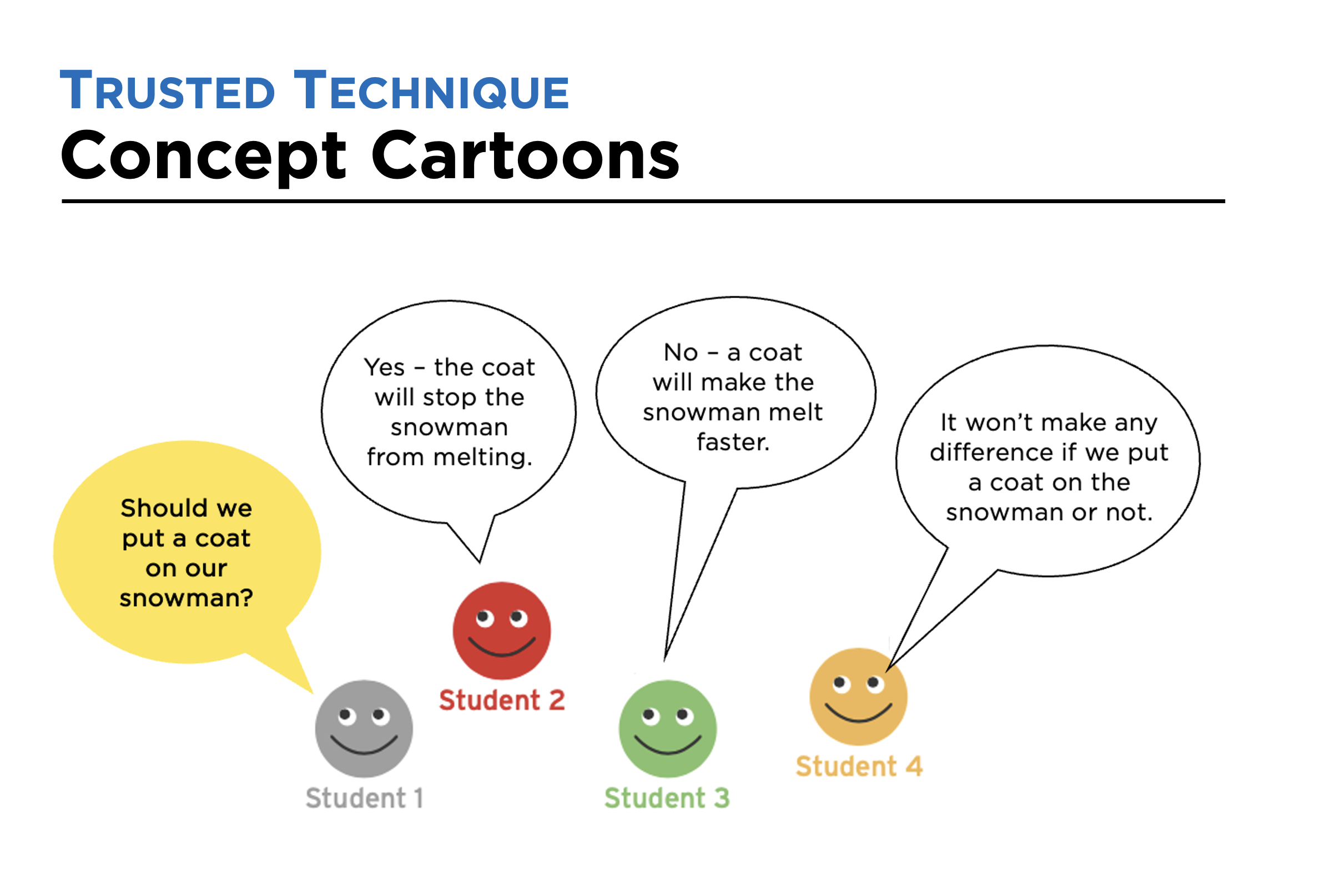Concept Cartoons
Concept Cartoons (Active Assessment in Science, Stuart Naylor et al.) are activities designed to:
Encourage students to think about specific things, in specific ways.
Tease out misconceptions we suspect they could have about particular content.
In each cartoon, the first character asks a question or makes a statement, which the other characters respond to. For example:
Students in your class are asked questions such as:
Who is right, who is wrong, who is partially right but partially wrong?
Who do you agree with, disagree with, or partially agree with?
Why?
They might think about these individually or discuss them in pairs or groups. Alternatively, there could be whole-class discussion, led by you. Responses might be verbal, or they could be written. For example, you might complement this technique with Show-me Boards.
At their best, Concept Cartoons should require a degree of cognitive struggle balanced with a realistic chance of success (the experience of success is one of the most powerful motivators in any classroom). By doing so, they should encourage ‘desirable thinking’ - not too easy; not too difficult.
A good tip when creating Concept Cartoons is to consider the real responses students give to questions. It can be useful to get into the habit of noting these and building them into future cartoons.
Focused reflection
How well do you currently use this technique?
Is it a technique you will focus on developing?
If so, what are the key features you will focus on (things to do, and not do)?



